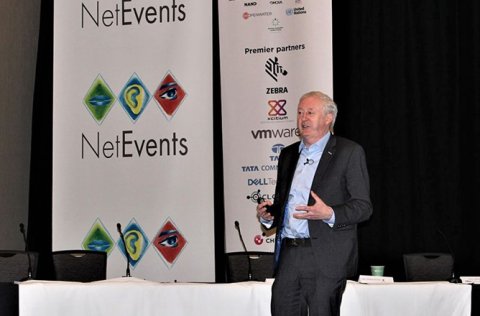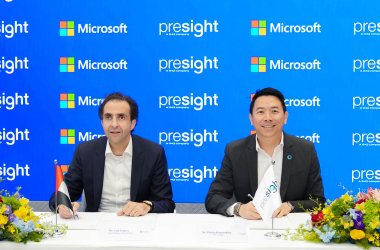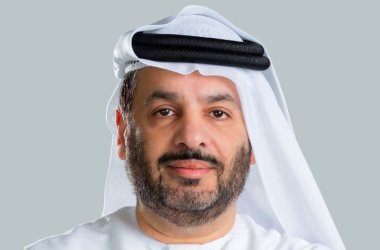Professor Martin Curley believes that the healthcare industry is a decade behind other sectors in terms of digitalisation. 
He made the comments as a guest speaker at the NetEvents Global Media Summit in San Jose.
Curley is a prominent innovator and thought leader in the field of healthcare technology.
The theme of the event was digital transformation, and Curley was quick to acknowledge that, with its numerous layers of complexity and at times conservative management, healthcare has not been a leading exemplar of this trend.
He is pledged to do his utmost to change that, urging players across the health ecosystem to adopt his idea of ‘stay left, shift left, 10x’ as a formula for fixing the sector’s digital deficiencies.
“If this was 200 years ago, most of us probably wouldn’t be here,” he said, addressing the summit. “Life expectancy has now improved thanks to amazing advances like penicillin, stents, X-rays, MRI. But just reflect that if air travel worked like healthcare, most of us wouldn’t have been able to travel to this event. We have a paradox. Despite amazing clinical advances, healthcare is about a decade behind other industries in digitalising.”
Curley referred to friend and colleague Dr John Sheehan to illustrate the value of measuring vital signs and accessing key health information in a context outside of a modern-day hospital: “Sheehan, a radiologist and vice chair of the Digital Health Leadership Steering group, as well as a digital entrepreneur, recently had a serious bicycle accident wearing his Apple Watch,” he explained. “Immediately he had the accident, the watch sent a warning to his wife and several others saying he had had a hard fall and giving them his GPS coordinates.”
With more digital advances like this, speculated Curley, pressure could be taken off struggling health systems the world over: “With 500 people a week dying in the UK because of delays in emergency care, something is clearly not working,” he observed. “Patients, along with dedicated people working as clinicians and nurses in our healthcare systems, are being failed by a very real crisis in healthcare provision.”
As well as flagging healthcare services strapped for resources, there is the demographic time bomb of aging populations across the developed world: “Plus some hospitals are averaging 100% staff turnover every five years,” Curley added. “Can you imagine if businesses were having that sort of turnover? It’s not sustainable.
Hospital costs are up 250%. Labor costs have gone up about 75%. In the US, about 20% of GDP spending is on healthcare. And yet the system is a laggard in digitalization.”
He identified not just a problem, but a massive opportunity for revolutionary science to be applied to healthcare: “We’re about to enter a period where we have a completely new paradigm in our healthcare systems,” he enthused. “We recently brought 50 digital health leaders from around the world to New York as part of the United Nations General Assembly. And out of that came something called the Manhattan Manifesto. You can’t cure chronic diseases. But if you get them early enough, you can reverse them. We’re advocating a completely new paradigm around healthcare, one that is digitally enabled.”
With so many amazing disruptive technologies now available, there is the opportunity to transform healthcare, he said, leaping to a whole new digital health model where everything is based around the patient, and around the devices they carry on them: “On my phone, I have a personal electronic health record,” he explained. “It’s got my recent MRI scan details, my colonoscopy. It’s taking live data from my Fitbit. I should be able to walk to a hospital or a GP and give them immediate access. We need to reimagine the way that we do healthcare, transforming the industry with capabilities like this.”
Curley believes we need three Copernican shifts in how our healthcare systems are built: “The emphasis should be on wellness rather than illness, should be centered on the patient, as the patient knows best, and lastly the shift should be from the hospital to the home.”
A move to digital healthcare is about helping people, but it can also be highly profitable as well, he explained. “We need an open, collaborative ecosystem where we have everybody working together: government, industry, academia, citizens and patients. What I’ve defined as ‘stay left, shift left, 10x’ is about using technology to keep people well, or if you happen to have a chronic condition or need rehab, we can manage that best at home. Shift left is about moving patients as quickly as possible from an acute facility to a community or a home setting. And 10x is what we’ve observed happens when we apply digital technology. We’re seeing 10x better, 10x faster, 10x cheaper, 10x higher volumes. Not only do we get better care, but it comes at lower cost, and we get better quality of life.”
By providing 21st century tools to physicians they are enabled to make better decisions, argued Curley: “They burn out less quickly, and patients have a much better experience.”
He gave an early instance of this idea in action: “COVID in Ireland was two days old when we set up a remote monitoring solution using pulse oximeters sending oxygen saturation levels via Bluetooth to an app.
And this kept tens of thousands of Irish patients at home and out of hospital. This was a technology that wirelessly transmitted your respiration rate. We quickly found we could get up to 12 hours’ notice of a patient, saturating, which was lifesaving.
So we deployed it into 23 hospitals in four months. Normally, it might have taken five or 10 years. We did it very quickly. We’ve now put it into the community in the most remote parts of Ireland.”
Ireland has, said Curley, 300,000 people with rare diseases which with modern genome sequencing could be diagnosed 10 times, perhaps 100 times faster in the context of a pharmacy rather than a hospital.
“We have been cleaning some of our hospitals with ultraviolet robots that do it 10 times faster than the cleaners, as well as three times better and two and a half times cheaper. We can operate virtual wards 10 times cheaper than physical ones. It’s at least 10 times cheaper to have a person monitored from home than in an acute hospital. We’re on track to reduce the number of deaths in Ireland from skin cancer from 1500, a year to 150. We could have 10 times Higher screening rates using digital assistant technology in our pharmacies. And so it goes on.”
Every global citizen, said Curley, should have universal access to integrated shared health records, on their phone, in the cloud, leading to a true outcome-based healthcare model: “Then lastly we need to allocate the appropriate financial and regulatory resources towards achieving digital transformation,” he concluded.





